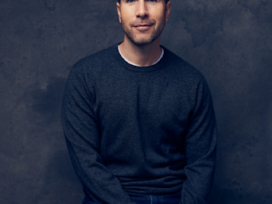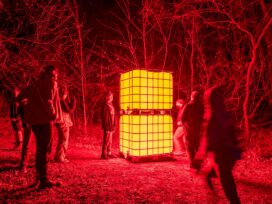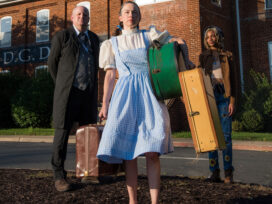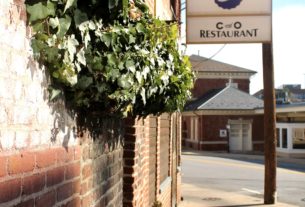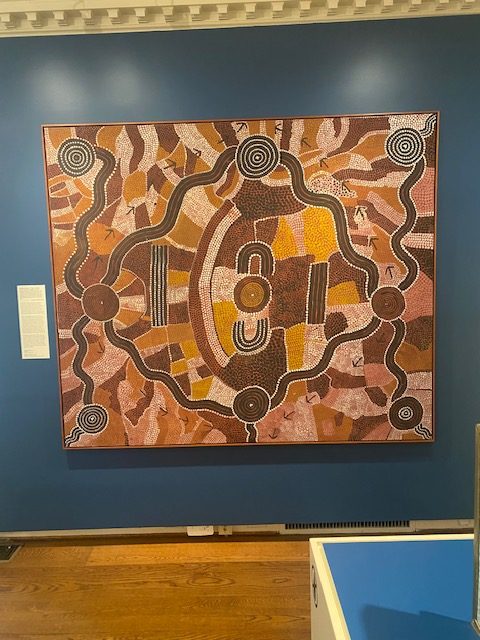
Aboriginal art on display at UVA
With a free 30-minute tour, guide Ed Miller walks visitors through the past, present, and the future of Aboriginal art at UVA’s Kluge-Ruhe Aboriginal Art Collection. The tour of the 84 year old colonial revival style house begins with an acknowledgment of the original inhabitants of the majority of the Piedmont and parts of the Blue Ridge region of Virginia, the Monacan Indian Nation, who walked the land for 10,000 years.
The aboriginal people of Australia have some of the most sought-after art in the world. According to the Kluge-Ruhe Aboriginal Art Collection, the tradition of Aboriginal art is the oldest known art tradition in the world. It is believed that Aboriginal people of Australia have been making artwork as far back as 55,000 years. An Aboriginal person is anyone from Australia or the Torres Strait Islands, while the word aboriginal without a capital A refers to any indigenious person from any place.
The first exhibit “Past, Present, & Together,” tells the story of the origins of Aboriginal art. It was started in a small indigenous community of Australia named Papunya, in the late 1950s. Papunya is a settlement set up by the Australian government for displaced Aboriginal people. This settlement grew quickly and there were conflicts between different groups of Aboriginal people. In 1971, not wanting to lose their traditions, a small group of men got together and started to paint. Painting stories of where they were originally from, stories that had been handed down from generation to generation. Aboriginal people do not have a written language, so their history is passed down orally and through the arts.
Geoffrey Bardon, who worked at the primary school in Papunya, saw that the art was more than just paintings on canvases and started to promote artists in Papunya. He began providing them the canvases and art supplies. In 1972, the pace of painting started to pick up at even greater speed and the art center Papunya Tula was started. This art center would provide paints, canvases, and a space for artists to paint. Kaapa Mbitjinpa Tjampitjinpa was one of the artists on display, has been acknowledged as the artist that helped to popularize Aboriginal art
One of the many concepts in Aboriginal art is called “The Dreaming.” The Dreaming is a big encompassing concept of spiritual beliefs, a moral code of living, connection to the land, and ancestors. The Dreaming has nothing to do with actual dreaming, they are stories of creation.
The exhibit explains that even though the Aboriginal people have been painting for 50,000 years on the body and natural surfaces, canvas and board are relatively new mediums. Dots are a common feature of Aboriginal art used to infill designs, but dots are also used to obscure information within Aboriginal art. Another concept that comes up in Aboriginal art is a sense of country. For them, this means having a connection to where they are from. It is also a connection to the sky, cosmos, and the landscape. Many paintings use earth tones because they are using pigments from what materials are around them.
The tour ended with a modern look at Aboriginal art. Our guide tells us how any form of art can be Aboriginal art if it is done by an Aboriginal person. This art exhibit was works from 1971 to 1994. In Papunya Tula, most of its art was done by men, but this was not done on purpose. In part two of this exhibit that will start in March will feature a lot of the female Aboriginal artists. The second show will showcase work from 1994 to the present day.


